Lumber
Temperate Lumber
This variety of wood thrives in moist and chilly environments. Found across the northern hemisphere, temperate timber spans from North America to Europe and Russia, extending into certain regions of Asia.
Alder :

- Kind:
- Lumber
- Category:
- Hard wood
- Scientific Name:
- Alnus rubra
- Common Names:
- Distribution:
- North America: Pacific coast region from southeastern Alaska to western British Columbia and south through western Washington and western Oregon to southern California. The range of red alder extends from southern California (latitude 34oN) to southeastern Alaska (60oN).
- Average Density:
- 0.5
- General Characteristics:
- Red alder wood is almost white when freshly cut but quickly changes to a light tan or light brown with a yellow or reddish tinge when exposed to the air. Heartwood is formed only in trees of advanced age, and there is no visible boundary between heartwood and sapwood.
- Work Properties:
- Red alder is excellent for turning and polishing and takes glue, paint and stain well.
- Durability:
- Rated as slightly or nonresistant to heartwood decay.
- Usage:
- Nonstructural lumber, factory appearance-grade lumber, chips for pulp and paper, furniture, cabinets, pallets, core stock for plywood, interior finishing, fuelwood, charcoal, chips for smoke curing.
- Zone:
- Temperate
American Walnut :
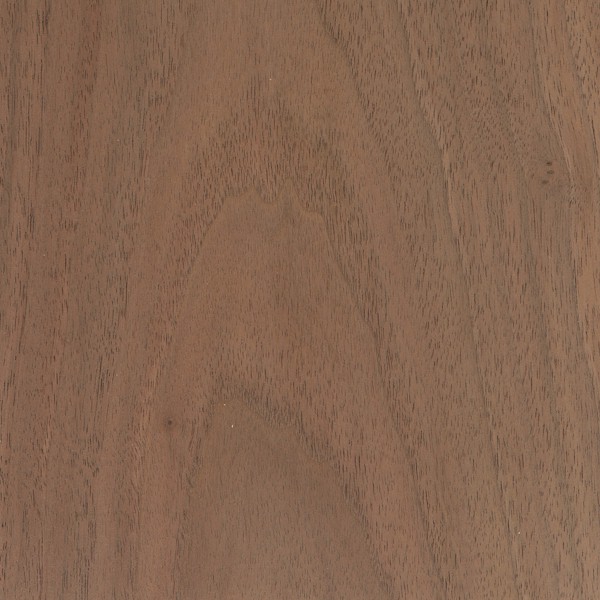
- Kind:
- Lumber
- Category:
- Hard wood
- Scientific Name:
- Juglans Nigra
- Common Names:
- American Walnut, Virginia Walnut, Canaletto, Black Hickory Nut
- Distribution:
- North America
- Average Density:
- 0.65
- General Characteristics:
- Black Walnut heartwood is rich dark brown to purplish-black and is usually straight grained. Wavy or curly grain is sometimes present. Texture is coarse.This medium density wood is tough and hard. It has moderate bending and crushing strengths. Stiffness is low. It has good steam bending characteristics.
- Work Properties:
- Black Walnut can be worked with hand or power tools without difficulty. Moderate blunting effect on cutters. Takes nails and screws well. Glues satisfactorily. Finishes to a high polish.
- Durability:
- Very durable. Sapwood is susceptible to attack by powder post beetles. Heartwood is resistant to preservative treatment and biodegradation.
- Usage:
- The standard for gunstocks in the U.S. Extensively used in high-quality furniture, cabinetmaking, boatbuilding, musical instruments, clock cases, turning and carving. Sliced or cut for paneling, veneers.
- Zone:
- Temperate
Ash :

- Kind:
- Lumber
- Category:
- Hard wood
- Scientific Name:
- Fraxinus spp.
- Common Names:
- Distribution:
- South-eastern Canada. Eastern US
- Average Density:
- 0.65
- General Characteristics:
- The sapwood of ash is light brown, while the heartwood is brown to grayish brown. White ash and Oregon ash have lighter heartwood than the other commercial species. The width of the sapwood is 3 to 6 inches. It is ring porous, with the latewood being composed of parenchyma which surrounds and unites the latewood pores in tangential bands. It has no characteristic odor or taste.
- Work Properties:
- Ash is straight grained, heavy, hard, strong, stiff and wears smooth with high shock resistance. It machines well and is better than average in nail and screw holding capacity. It glues moderately we
- Durability:
- Classed as slightly non-resistant to heartwood decay.
- Usage:
- Handle stock, baseball bats, non upholstered furniture, flooring, millwork, hand tools, sporting goods, boxes and crates.
- Zone:
- Temperate
Beech :

- Kind:
- Lumber
- Category:
- Hard wood
- Scientific Name:
- Fagus Grandifolia
- Common Names:
- Beech
- Distribution:
- A native of Western Europe, this species is reported to grow throughout Europe, approximately between latitudes 40 degrees N and 60 degrees N, and western Asia. European beech is reported to thrive exceptionally well on chalky limestone hills, but will also do very well on any reasonably fertile light soil, with good drainage.
- Average Density:
- 0.723
- General Characteristics:
- Beech wood is primarily reddish-brown in color and slightly coarse with conspicuous rays and tiny pores. The grain is straight with a fine, even texture.
- Work Properties:
- Works easily with hand and power tools. Good nailing and gluing properties. Stains and polishes to a good finish.
- Durability:
- Susceptible to attack by common furniture beetles and longhorn beetles. Perishable, but permeable for preservative treatment.
- Usage:
- Cabinetmaking, furniture, solid and laminated flooring, brush backs, veneers, wooden spoons, handrail parts. Beech wood is well suited for food containers as it does not impart any taste or odor.
- Zone:
- Temperate
Cherry :

- Kind:
- Lumber
- Category:
- Hard wood
- Scientific Name:
- Prunus serotina
- Common Names:
- American black cherry
- Distribution:
- Throughout the Eastern USA. Main commercial areas Pennsylvania, Virginia, West Virginia and New York States.
- Average Density:
- 0.561
- General Characteristics:
- The heartwood of cherry varies from rich red to reddish brown and will darken on exposure to light. In contrast the sapwood is creamy white. The wood has a fine uniform straight grain, smooth texture, and may naturally contain brown pith flecks and small gum pockets.
- Work Properties:
- Cherry is easy to machine, nails and glues well and when sanded, stained and polished, it produces an excellent smooth finish. It dries fairly quickly with moderately large shrinkage, but is dimensionally stable after kilning.
- Durability:
- Rated as resistant to heartwood decay. The sapwood is liable to attack by common furniture beetles, and the heartwood moderately resistant to preservative treatment.
- Usage:
- Furniture and cabinet making, high class joinery, kitchen cabinets, mouldings, paneling, flooring, doors, boat interiors, musical instruments, turning and carving.
- Zone:
- Temperate
Douglas Fir :
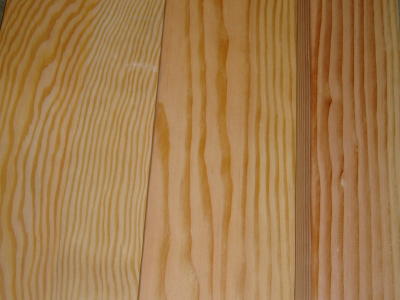
- Kind:
- Lumber
- Category:
- Soft Wood
- Scientific Name:
- Pseudotsuga Menziesii
- Common Names:
- Douglas Fir
- Distribution:
- Originating from North America, Douglas Fir was introduced in France in 1842. Wide spread today, its production keeps growing (+15% a year). Its rapid growth gives birth to tall trees ( 50 meters), with a large diameter(2meters), straight-grained, thick and checkered bark.
- Average Density:
- 0.54
- General Characteristics:
- Its reddish-brown heartwood is distinctive from its cream white sapwood. Douglas fir is straight grained, with medium torture and sound knots.
- Work Properties:
- Drying is rather easy , machining is also rather easy, Jointing on the other hand is very easy. However, finishing is to be carried out with caution rather easily.
- Durability:
- Douglas Fir is naturally durable: Heartwood is resistant to mushrooms. Douglas-Fir can be used in Class 3 ( timber exposed to weathering). Impregnation must be done by Vacuum pressure treatment.
- Usage:
- Thanks to its availability in long lengths, Douglas fir is widespread in the building industry. Ideal for frameworks, included glued laminated timber as well as for cladding, exterior joinery and layout. It also finds a use in exterior structures such as decking, footbridges and floating docks.
- Zone:
- Temperate
Elm :

- Kind:
- Lumber
- Category:
- Hard wood
- Scientific Name:
- Ulmus
- Common Names:
- Orme
- Distribution:
- The eastern to midwest United States.
- Average Density:
- 0.7
- General Characteristics:
- The sapwood of elm is nearly white, while the heartwood is light brown to brown with a reddish tinge. The wood has no characteristic odor or taste.
- Work Properties:
- Elm is moderately heavy, hard and stiff, with excellent bending and shock resistance. It is difficult to split because of its interlocked grain.
- Durability:
- Rated as slightly or nonresistant to heartwood decay.
- Usage:
- Boxes, baskets, crates, cheese boxes, slack cooperage, furniture, caskets, hockey sticks, veneer, pulp and paper manufacture.
- Zone:
- Temperate
French Oak :

- Kind:
- Lumber
- Category:
- Hard wood
- Scientific Name:
- Quercus petraea
- Common Names:
- European Oak, German Oak, Spessart Oak, Fultz Oak
- Distribution:
- Oak Trees are the dominant broad leaved species of temperate Europe
- Average Density:
- 0.74
- General Characteristics:
- Heart wood is Light brown, sapwood is clearly demarcated. The wood texture is medium with a straight grain. The pearly white silver figure is large and well visible.
- Work Properties:
- Durability:
- This species is listed in the European Standard NF EN 350-2. Durability is linked to the presence of water soluble tannins. It decreases with tannins washing in case of harsh exposition. Does Not require any preservative treatment against dry wood borer attacks. Does Not require any preservative treatment in case of temporary humidification, however, for permanent exposition to humidity, appropriate preservation treatment must be acquired.
- Usage:
- Fine furniture and cabinet work, architectural mill work, wood turning, boat building, wood carving, flooring, veneers and many others
- Zone:
- Temperate
Hard Maple :
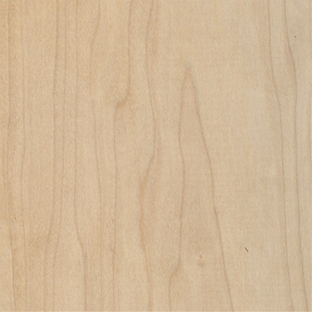
- Kind:
- Lumber
- Category:
- Hard wood
- Scientific Name:
- Acer saccharum, A. nigrum
- Common Names:
- Sugar maple, black maple
- Distribution:
- Eastern USA, principally Mid-Atlantic and Lake States. A cold weather tree favoring a more Northerly climate.
- Average Density:
- 0.705
- General Characteristics:
- The sapwood is creamy white with a slight reddish brown tinge and the heartwood varies from light to dark reddish brown. The amount of darker brown heartwood can vary significantly according to the growing region. Both sapwood and heartwood can contain pith flecks. The wood has a close fine texture and is generally straight grained, but it can also occur as a "curly", "fiddleback", and "birds-eye" figure.
- Work Properties:
- Hard maple dries slowly with a large shrinkage, so it can be susceptible to movement in performance. Pre-boring is recommended when nailing and screwing. With care it machines well, turns well, glues satisfactorily, and can be stained and polished to an outstanding finish.
- Durability:
- Rated as slightly or non-resistant to heartwood decay. Sapwood is liable to be attacked by furniture beetles. The heartwood is resistant to preservative treatment but the sapwood is permeable.
- Usage:
- Flooring, furniture, paneling, kitchen cabinets, worktops and table tops, interior joinery: stairs, handrails, moldings, and doors.
- Zone:
- Temperate
Lebanese Cedar :

- Kind:
- Lumber
- Category:
- Hard wood
- Scientific Name:
- Cedrus Libani
- Common Names:
- Cedar Of Lebanon
- Distribution:
- Middle East, Europe
- Average Density:
- 0.56
- General Characteristics:
- The Heartwood is strongly scented and resinous with contrasting growth rings marked by darker dense latewood zones. There may be in-growing bark pockets in the wood, a feature of true Cedars
- Work Properties:
- Easy to work with hands or machines, with a little blunting effect on cutters. Large knots and in-bark may cause difficulty when machining. Nails and screws hold well.
- Durability:
- This soft, brittle timber has a low bending strength and stiffness, resistance to shock loads and crushing strength. It also has a very poor steam bending classification due to resin exudation
- Usage:
- suitable for joinery, doors/interior decoration (selected grades). Timber that is grown in the UK is usually knotty and is mainly used for outdoor furniture, gates, fences and exterior work. Selected grades suitable for wall paneling, interior joinery and furniture.
- Zone:
- Temperate
Red Oak :
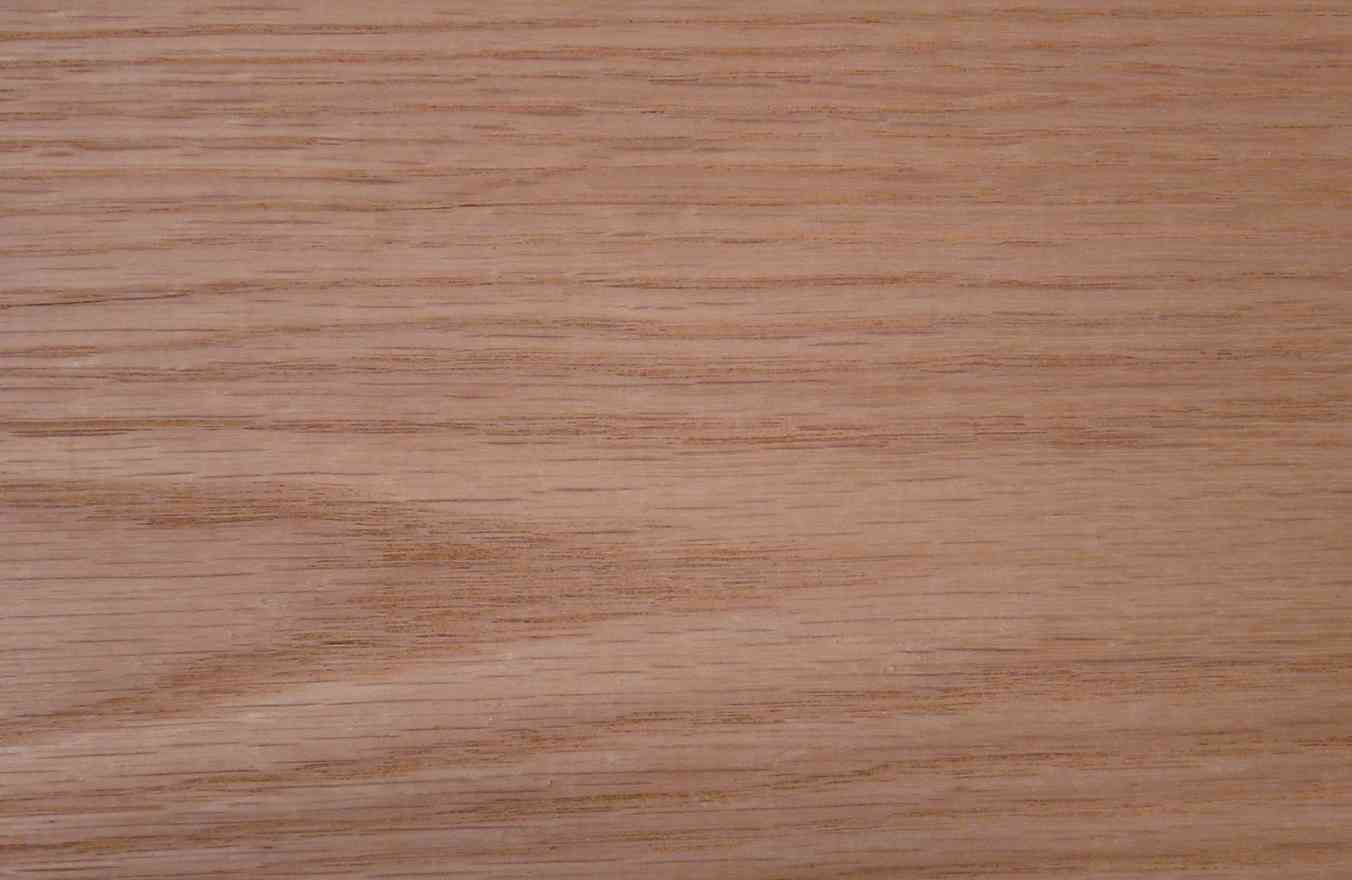
- Kind:
- Lumber
- Category:
- Hard wood
- Scientific Name:
- Quercus spp
- Common Names:
- Northern red oak, Southern red oak
- Distribution:
- Widespread throughout the Eastern USA. The oaks are by far the largest species group growing in the Eastern hardwood forests. Red oaks grow more abundantly than the white oaks. The red oak group comprises many species, of which about eight are commercial.
- Average Density:
- 0.63
- General Characteristics:
- The sapwood of red oak is white to light brown and the heartwood is a pinkish reddish brown. The wood is similar in general appearance to white oak, but with a slightly less pronounced figure due to the smaller rays. The wood is mostly straight grained, with a coarse texture. The red oak tree gets its name because of the color of the leaves in the 'fall' (Autumn).The wood is hard and heavy, with medium bending strength and stiffness and high crushing strength. It is very good for steam bending. Southern red oak has a more rapid growth than Northern red oak and tends to be harder and heavier.
- Work Properties:
- Red oak machines well, nailing and screwing is good although pre-boring is recommended, and it can be stained and polished to a good finish. It dries slowly with a tendency to split and warp. It has a high shrinkage and can be susceptible to movement in performance
- Durability:
- Rated slightly to non-resistant to heartwood decay, moderately easy to treat with preservatives.
- Usage:
- Construction, furniture, flooring, architectural interiors, internal joinery and mouldings, doors, kitchen cabinets, paneling, coffins and caskets. Not suitable for tight cooperation. Red oak can vary in color, texture, characteristics and properties according to the growing region. It is therefore recommended that users and specifiers work closely with their suppliers to make sure the wood they order is suited to their specific needs.
- Zone:
- Temperate
Soft Maple :

- Kind:
- Lumber
- Category:
- Hard wood
- Scientific Name:
- Principally Acer rubrum, A. saccharinum
- Common Names:
- Red maple, silver maple
- Distribution:
- Throughout the Eastern USA, and to a lesser extent on the West coast (bigleaf maple).
- Average Density:
- General Characteristics:
- In most respects the wood of soft maple is very similar to that of hard maple. Although due to its widespread growth it may be more susceptible to regional color variations. Generally the sapwood is grayish white, sometimes with darker coloured pith flecks. The heartwood varies from light to dark reddish brown. The wood is usually straight grained. The lumber is generally sold unselected for colour.Soft maple is about 25% less hard than hard maple, has medium bending and crushing strength, and is low in stiffness and shock resistance. It has good steam bending properties.
- Work Properties:
- Soft maple machines well and can be stained and polished to an excellent finish. It glues, screws, and nails satisfactorily. It dries slowly with minimal degradation and there is little movement in performance.
- Durability:
- Non-resistant to decay and insect attack. The heartwood is moderately resistant to preservative treatment but the sapwood is permeable
- Usage:
- Furniture, paneling, interior joinery, kitchen cabinets, moldings, doors, musical instruments, and turning. Soft maple is often used as a substitute for hard maple or stained to resemble other species such as cherry. Its physical and working properties also make it
- Zone:
- Temperate
Spruce :

- Kind:
- Lumber
- Category:
- Soft Wood
- Scientific Name:
- Picea abies, syn. P. excelsa
- Common Names:
- European Spruce, Romanian Whitewood, White Fir, White Spruce, Violin Wood, Picea excelsa, Carpathian Spruce
- Distribution:
- Northern hemisphere,various parts of Europe and the north of Asia
- Average Density:
- 0.41
- General Characteristics:
- The sapwood of this species is white to pale yellow in color; the heartwood is brown to reddish brown. Growth rings are prominently marked by the darker, denser summerwood. The texture of Norway Spruce is relatively fine, and its grain typically straight
- Work Properties:
- Spruce is easy to work, except for the small tight knots that quickly dull tool edges. The timber glues satisfactorily using standard bonding procedures. However, it can give poor results when being stained due to its closed-pore structure. A sanding sealer, gel stain or toner is recommended when coloring Spruce. It is a resinous timber, and its sawdust is reported to cause skin irritation and respiratory problems among some users
- Durability:
- Heartwood is rated as being slightly resistant to non-resistant decay.
- Usage:
- The timber of this species is flexible and durable. Its relative lightness, long length and straightness make it ideal for telegraph poles, wooden ladders, oars, roofing timbers and paper pulp. Construction grades are commonly used for non-structural applications such as flooring and cladding, inexpensive furniture, joinery and general carpentry. Top-grade Norway Spruce is a premium tone wood prized by luthiers for its acoustic properties; it is a timber of choice for acoustic guitar soundboards.
- Zone:
- Temperate
Sylvester pine :

- Kind:
- Lumber
- Category:
- Soft Wood
- Scientific Name:
- Pinus Sylvestris
- Common Names:
- Red Wood, Scots pine.Baltic redwood, Common pine , Norway fir, Pine, Red deal, Red pine, Scots fir, Scots pine, Vanlig tall, Yellow deal, Scotch pine
- Distribution:
- It grows in Norway, Sweden, Russia, and in other parts of Northern Europe. It is also a native of the highlands of Scotland.
- Average Density:
- 0.55
- General Characteristics:
- Scots pine shows a distinct yellowish white sapwood and a pinkish to reddish-brown heartwood. Generally straight-grained with fine texture.
- Work Properties:
- Scots Pine is easy to work with and is a reasonably strong timber with a light weight. When treated with preservatives it is durable enough for outside use.
- Durability:
- The heartwood is reported to have very little natural resistance to decay, and is vulnerable to insect attack. The timber is reported to absorb and retain sufficient amounts of preservatives, which allows it to be used for exterior applications such as utility poles, railway sleepers, and fences. Resistance to Impregnation The heartwood is reported to be moderately resistant to impregnation. The sapwood is treatable.
- Usage:
- Bedroom suites, Building construction, Building materials, Cabin construction, Cabinetmaking, Chairs, Chests, Construction, Decorative veneer, Desks, Dining-room furniture, Factory construction, Fine furniture, Form work, Furniture , Furniture components, Furniture squares or stock, Heavy construction, Joinery, Light construction, Living-room suites, Office furniture, Rough construction, Rustic furniture, Tables , Turnery, Utility furniture, Vehicle parts, Veneer, Wardrobes
- Zone:
- Temperate
Western Red Cedar :
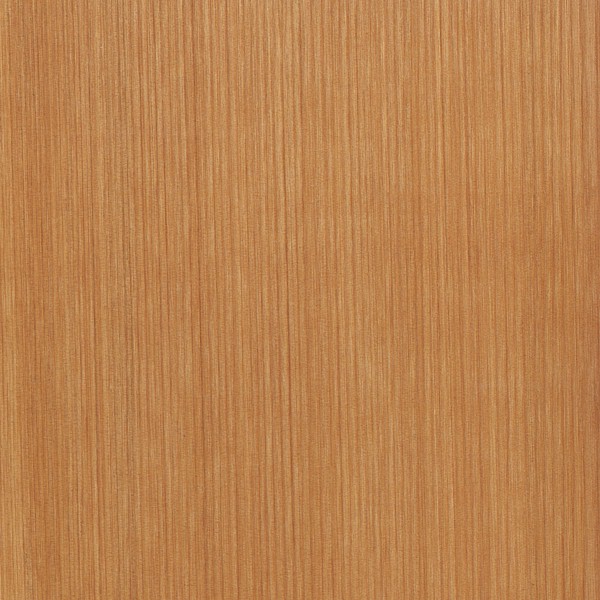
- Kind:
- Lumber
- Category:
- Soft Wood
- Scientific Name:
- Thuja plicata
- Common Names:
- Western Red Cedar
- Distribution:
- Pacific Northwest United States/Canada
- Average Density:
- 0.375
- General Characteristics:
- Western Red Cedar is typically reddish to pinkish brown, often with random streaks and bands of darker red/brown areas. Has a straight grain and a medium to coarse texture. Western Red Cedar has a strong, aromatic scent when being worked.
- Work Properties:
- Easy to work with both hand or machine tools, though it dents and scratches very easily due to its softness. Glues and finishes well, though as is the case with most softwoods with closed pores, even staining can be a challenge.
- Durability:
- Western Red Cedar has been rated as durable to very durable in regard to decay resistance, though it is not resistant to insect attack.
- Usage:
- Western Red Cedar is a commercially important lumber, used in a number of applications ranging from rough-sawn lumber for use in home construction to clear quartersawn material for classical guitar soundboards. Some common uses for Western Red Cedar include: shingles, exterior siding and lumber, boat-building, boxes, crates, and musical instruments.
- Zone:
- Temperate
White Oak :
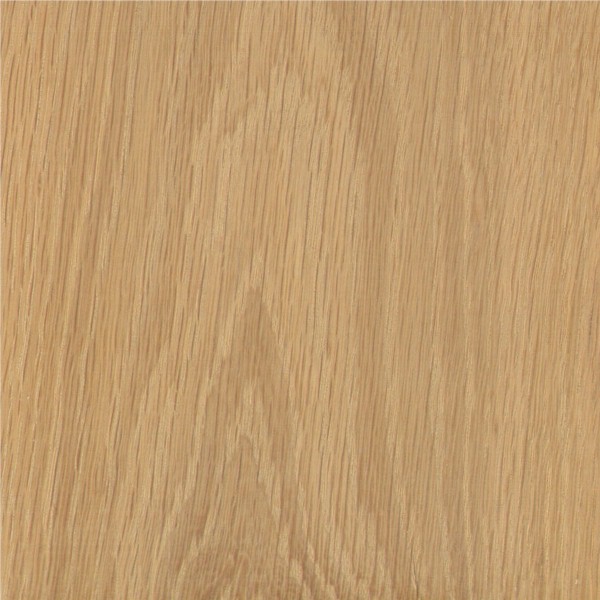
- Kind:
- Lumber
- Category:
- Hard wood
- Scientific Name:
- Quercus spp.
- Common Names:
- Northern white oak, Southern white oak
- Distribution:
- Widespread throughout the Eastern USA. The white oak group comprises many species, of which about eight are commercial.
- Average Density:
- 0.68
- General Characteristics:
- A hard and heavy wood with medium bending and crushing strength, low in stiffness, but very good in steam bending. Southern white oak is faster grown with wide growth rings, and tends to be harder and heavier.
- Work Properties:
- White oak machines well, nails and screws well although pre-boring is advised. As it reacts with iron, galvanized nails are recommended. Its adhesive properties are variable, but it stains and polishes to a good finish. The wood dries slowly and care is needed to avoid checking. Due to its high shrinkage, it can be susceptible to movement in performance.
- Durability:
- The heartwood is resistant to decay, extremely resistant to preservative treatment, and the sapwood is moderately resistant to treatment.
- Usage:
- Construction, furniture, flooring, architectural joinery, exterior joinery, mouldings, doors, kitchen cabinets, paneling, railway sleepers, timber bridges, barrel staves, coffins and caskets. White oak can vary in color, texture, characteristics and properties according to the growing region. It is therefore recommended that users and specifiers work closely with their suppliers to make sure the wood they order is suited to their specific needs. Northern and Southern may be sold separately.
- Zone:
- Temperate
